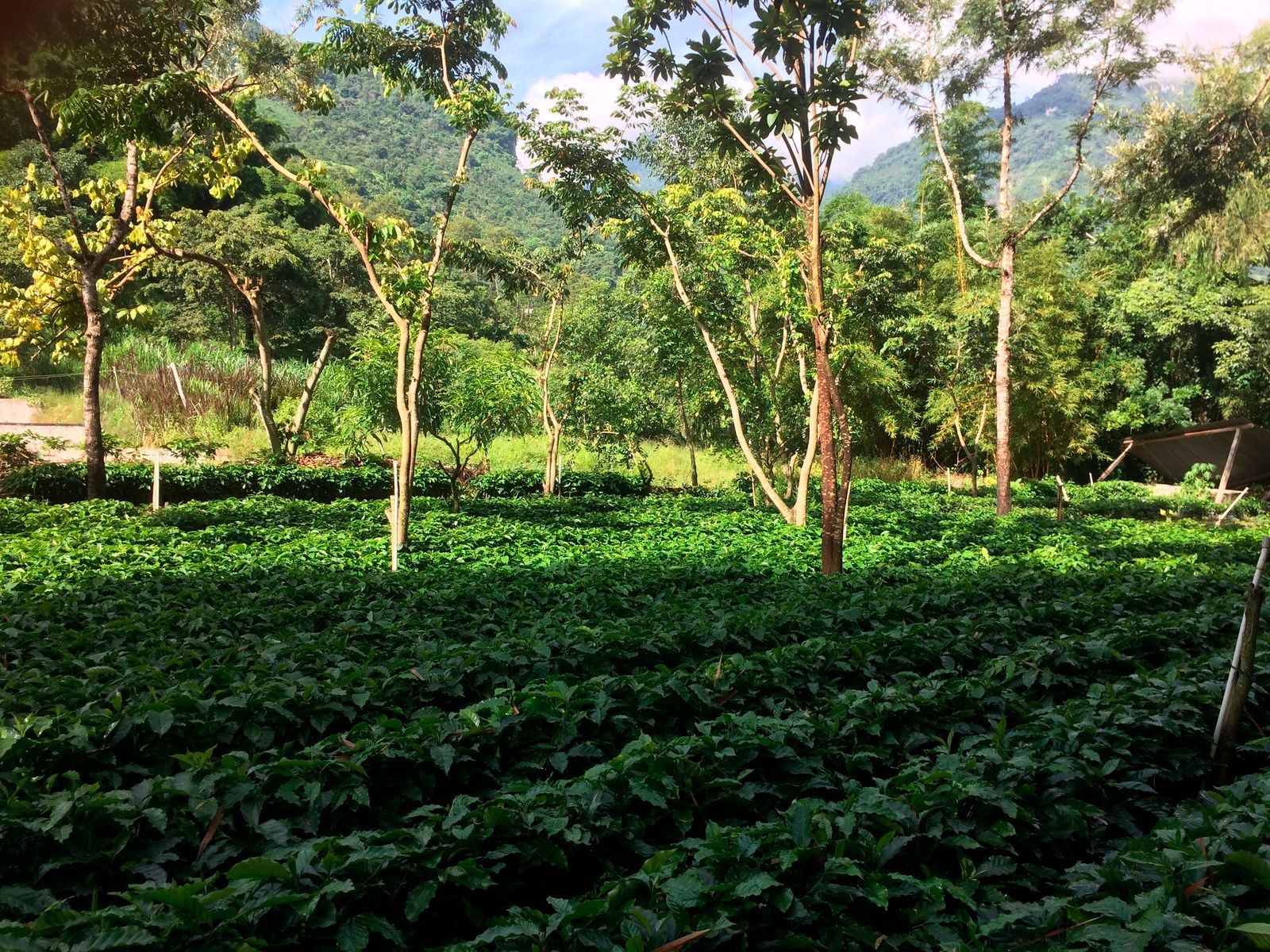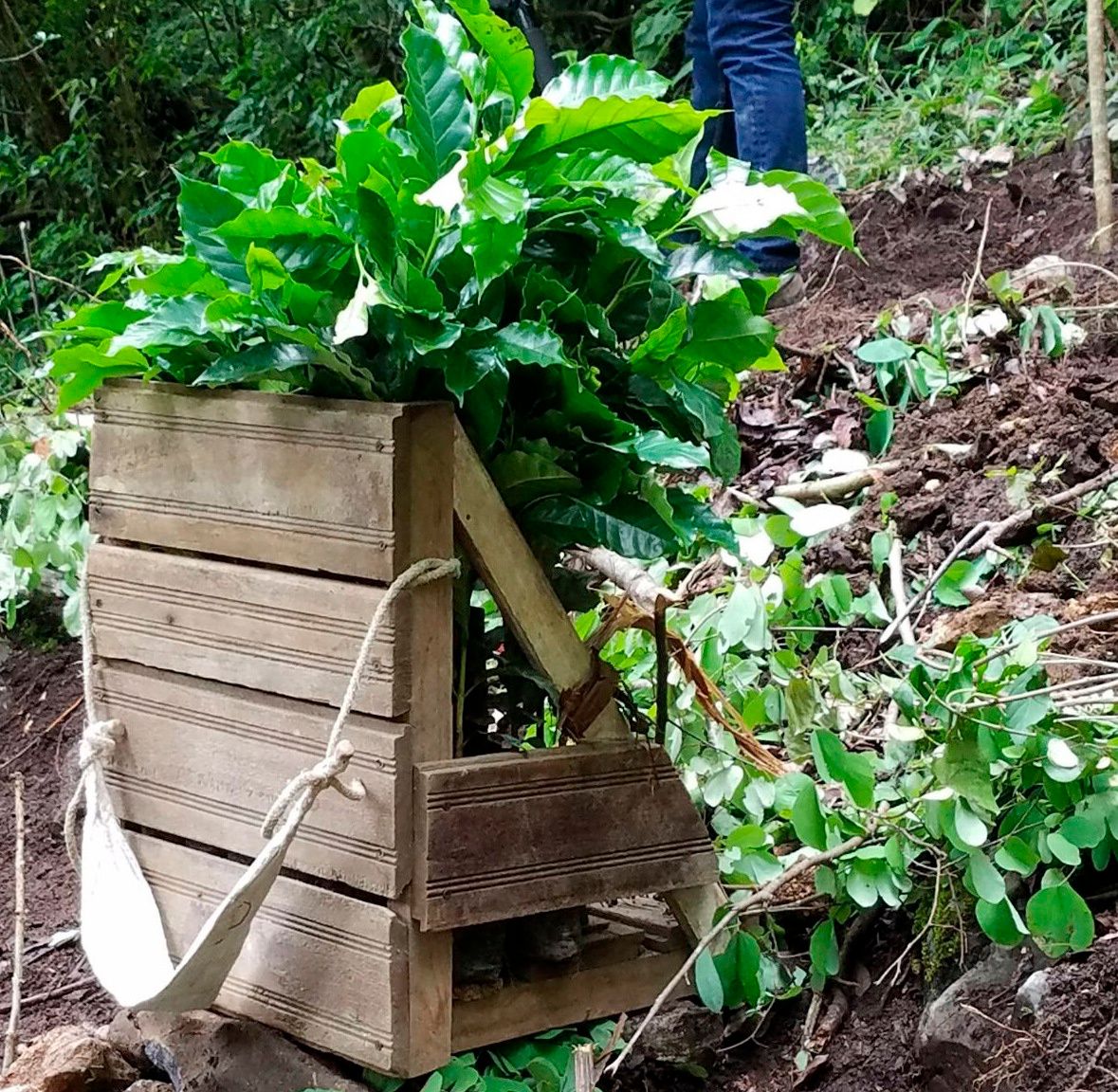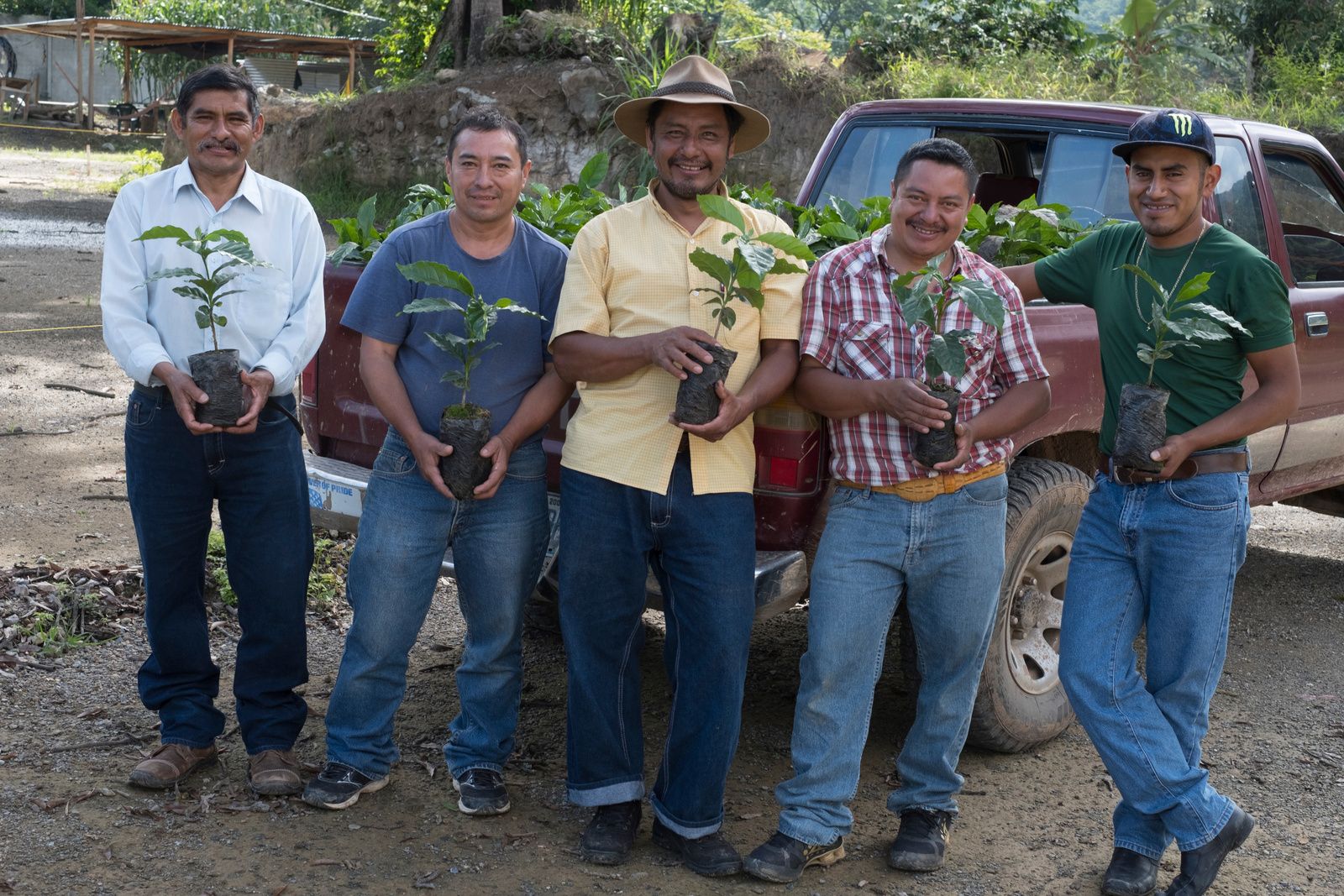

Starbucks
By Raina Lang
Editor’s note: Sept. 29 marks National Coffee Day in the U.S. Throughout September, Human Nature is publishing a series of reports on the Sustainable Coffee Challenge, a coalition working to make coffee the world’s first sustainable agricultural product. This post is the second in the series.
This story follows Conservation International’s (CI) director of sustainable coffee markets, Raina Lang, to Guatemala, with Mattea Fleischner, manager on Starbucks’ global social impact team. They were in the country to see how coffee trees are grown and delivered to farmers as part of the “One Tree for Every Bag” commitment, which has raised enough funds to plant more than 30 million new coffee trees. The commitment is part of a nearly 20-year partnership between CI and Starbucks.
As we approached the Huehuetenango nursery, crossing a one-lane bridge suspended over the Valparaiso River, I realized just how complex coffee tree deliveries could be. This year, the nursery is supplying half a million seedlings to farmers in the region as part of Starbucks commitment. As a partner in this effort, CI works with Starbucks and ECOM, the administrator of the nurseries, to ensure that healthy, high-quality coffee leaf-rust-resistant trees are distributed and that farmers understand and respect key environmental and social safeguards associated with the program.

I was in Guatemala to observe the deliveries of coffee trees to C.A.F.E. Practice farmers—those who comply with a set of social, environmental and economic best practices defined as requirements to enter the Starbucks supply chain. I also visited a few farms to see where and how trees were being planted. Tracking how nurseries deliver rust-resistant coffee plants to farmers—and monitoring the quality of the trees they’re delivering—is one critical step in monitoring designed to ensure healthy, sustainable coffee farms and thriving farmers.
Coffee farmers rely on productive and resilient trees to maintain their place as growers in a competitive market—and to sustain their livelihoods. Due to threats such as aging trees, climate change and significant pest and disease outbreaks in recent decades, farmers in many places are in desperate need of support. According to a 2015 study, there is a need to replant an estimated 22,000 square kilometers (13,600 square miles) globally, which translates to roughly 7 billion-10 billion coffee trees. To address this need—and build on the success of the One Tree for Every Bag program—Starbucks has committed to quadruple its commitment by providing 100 million healthy coffee trees to farmers by 2025.

This particular nursery in La Libertad—one of 12 nurseries across Guatemala, El Salvador and Mexico servicing the program—has the capacity to distribute 10,000 trees a day. But there’s a challenge: The bridge connecting trees to farmers can only be used by lightweight vehicles. When the river swells during rainy season, larger trucks that could transport greater quantities of trees can’t make it to the nursery, resulting in a dance of pick-up trucks entering and exiting the nursery.
When we made it to the nursery at 7 a.m., there were already two trucks waiting to be loaded. Nursery workers move the trees to the truck bed using a plastic crate, fitting roughly 700 to 1,000 coffee trees into the truck bed. The whole loading process took around 45 minutes per truck. To ensure that the trees are accounted for and tracked, there is an intricate process in place to document and record the quantity of trees, license plate, driver and date in a central registrar. Using this method, Starbucks and their local suppliers can account for the nearly 21 million coffee trees that have been distributed to C.A.F.E. Practices farmers since 2016.

That afternoon—just prior to a tropical downpour common in the tropics during rainy season—we visited a farm that had received seedlings from the program. Gustavo Alfaro is a fourth-generation farmer whose property was hit by coffee leaf rust several years back, just when he was taking it over from his father. Since taking ownership, he has made a concerted approach to increase shade cover in and around the coffee area. The trees and native vegetation in the zone regulate the climate across the farm, he explained, which can help mitigate future rust outbreaks. As we chatted, each newly delivered seedling was carried carefully to the area using a wooden backpack, then planted under a canopy of shade.

As we stood under the conacaste trees watching the seedlings being planted, we could hear the distinct calls of a tinamu chico, a flightless bird that roams the coffee fields in this region. In the face of climate change, those healthy, disease-resistant seedlings help Gustavo further build resilience on his farm.

But what if we could do more to help farmers like Gustavo adapt to a changing climate? Dozens of organizations in the Sustainable Coffee Challenge—including Starbucks—have joined forces to accelerate the responsible renovation and rehabilitation of coffee farms, committing to provide 1 billion healthy and productive trees worldwide. Together, the group is working to increase collective investment to ensure a healthy future for coffee and to make it possible for every coffee farmer to make renovation and rehabilitation a regular part of doing business.
Learn more about the Challenge and the commitments of partner organizations here.
Raina Lang is Conservation International’s director of sustainable coffee markets.

 233k
233k  41k
41k  Subscribe
Subscribe 